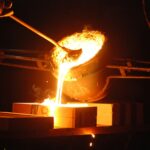Many people view massage therapy as a rare treat—something reserved for anniversaries, vacations, or a luxurious spa day.
While a massage is certainly relaxing, viewing it solely as an indulgence overlooks its profound impact on long-term health. It is a powerful therapeutic tool that can serve as a cornerstone of a proactive healthcare regimen.
Integrating regular soft tissue work into your routine does more than just help you unwind for an hour. It initiates a cascade of biological changes that affect everything from your immune system to your joint mobility.
By treating massage as preventative maintenance rather than a luxury, you take a significant step toward better physical and mental resilience.
Significant Stress Reduction and Mental Clarity
In our modern lives, chronic stress is a pervasive issue that wreaks havoc on the body. When you are stressed, your body produces high levels of cortisol, a hormone that can contribute to weight gain, sleeplessness, and digestive problems.
Massage therapy is an effective countermeasure to this physiological state.
The Chemistry of Calm
Massage triggers the parasympathetic nervous system, often called the “rest and digest” mode. This shift helps lower blood pressure and heart rate.
More importantly, studies indicate that massage can decrease cortisol levels while simultaneously boosting the production of serotonin and dopamine—neurotransmitters that stabilize your mood.
This chemical shift offers tangible benefits for your daily life:
- Improved Sleep Quality: A relaxed nervous system promotes deeper, more restorative sleep.
- Enhanced Focus: Reduced mental clutter allows for better concentration during work hours.
- Anxiety Management: Regular sessions provide a safe space for stress relief, helping to reset your emotional baseline.
Accelerated Muscle Recovery and Athletic Performance
Whether you are a professional athlete or a weekend warrior, physical activity takes a toll on your muscles. Micro-tears and inflammation occur after intense workouts, leading to soreness and stiffness. Regular massage therapy is a critical component of efficient muscle recovery.
Flushing Out Metabolic Waste
During a massage, the pressure applied to muscle tissue improves circulation, which helps flush out lactic acid and other metabolic waste products that accumulate during exercise. This process oxygenates the muscles, speeding up the healing of micro-tears.
Prevention of Injury
Consistent therapy keeps muscle fibers loose and flexible. Tight muscles are prone to strains and tears, but regular manipulation ensures that tissues remain elastic. Athletes often utilize massage to:
- Maintain an optimal range of motion.
- Identify tight spots before they become injuries.
- Reduce the duration of Delayed Onset Muscle Soreness (DOMS).
Managing Chronic Pain Without Medication
For the millions of people living with chronic pain conditions, massage offers a non-invasive alternative or complement to pharmaceutical treatments. By addressing the source of the pain rather than just masking the symptoms, therapists can provide lasting relief.
A Natural Approach to Pain Management
Pain often stems from localized inflammation or trigger points—tight knots of muscle fiber that refer pain to other parts of the body. Neuromuscular therapy and deep tissue techniques can deactivate these trigger points. This is particularly effective for conditions such as:
- Fibromyalgia: Reducing sensitivity and improving sleep patterns.
- Arthritis: Easing joint stiffness and improving mobility.
- Lower Back Pain: Releasing tension in the glutes and hamstrings that pull on the lumbar spine.
- Migraines: Alleviating tension in the neck and shoulders that contributes to tension headaches.
Boosting Immunity and Circulation
Your circulatory system is responsible for delivering oxygen and nutrients to cells while removing waste products.
Massage therapy mechanically assists this flow. The pressure created by the massage technique moves blood through the congested areas, and the release of this pressure causes new blood to flow in.
Supporting Lymphatic Drainage
Beyond blood flow, massage supports the lymphatic system. Unlike the heart, the lymphatic system does not have a pump; it relies on movement to circulate lymph fluid, which carries white blood cells to fight infection.
Manual lymphatic drainage techniques can stimulate this flow, potentially boosting the body’s natural cytotoxic capacity (the activity level of the body’s natural “killer cells”).
Better circulation contributes to:
- Faster healing of wounds and injuries.
- Healthier, more vibrant skin.
- Reduced swelling (edema) in the extremities.
Counteracting the Effects of Sitting
Sitting for prolonged periods is one of the most detrimental habits for musculoskeletal health. Office workers frequently suffer from “tech neck,” rounded shoulders, and tight hip flexors. Over time, these postural imbalances can lead to structural issues.
Correcting Postural Imbalances
Massage therapy helps elongate muscles that have shortened due to poor posture. By loosening the chest muscles and releasing tension in the neck and back, massage allows the skeletal structure to return to a neutral, healthy alignment.
Regular sessions help counteract desk-job strain by:
- Opening the Chest: Reversing the hunching forward motion associated with typing.
- Releasing Hip Flexors: Loosening muscles that become short and tight from sitting in a chair all day.
- Improving Spinal Health: Reducing the load on the vertebrae caused by muscular imbalances.
Integrating Massage into a Holistic Health Plan
Massage therapy works best when viewed as part of a broader ecosystem of health. It complements other treatments and lifestyle choices, creating a synergy that maximizes wellness.
Pairing Massage with Rehabilitation
For those recovering from surgery or significant injury, a multi-disciplinary approach is often necessary.
For example, patients utilizing Ottawa physiotherapy services often find that integrating massage therapy into their rehabilitation plan accelerates their progress. The massage loosens the tissue, making the physiotherapy exercises more effective and less painful.
The Big Picture of Health
Adopting a holistic health perspective means understanding that mental, physical, and emotional health are interconnected.
Massage bridges these gaps. It connects the mind to the body, encouraging a sense of awareness that can lead to better lifestyle choices, such as improved hydration or a commitment to regular stretching.
Make Massage Part of Your Routine
The evidence is clear: massage therapy is far more than a fleeting luxury. It is a viable, scientifically supported method for managing stress, treating pain, and maintaining a healthy body.
If you have been waiting for a special occasion to book an appointment, consider your long-term health the only reason you need.
Start by scheduling a session once a month and observing how your body responds. You may find that the investment pays dividends in energy, mood, and mobility that last long after the session ends.




